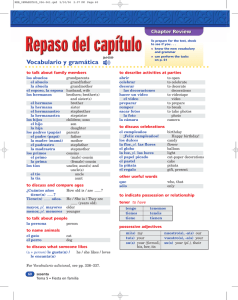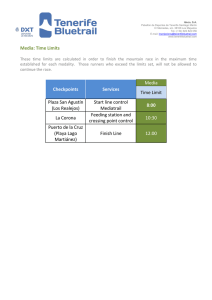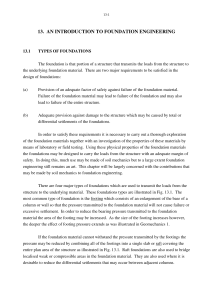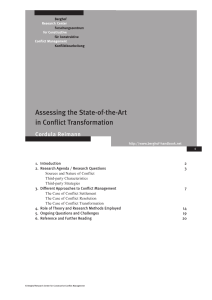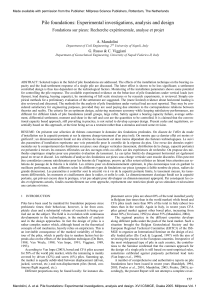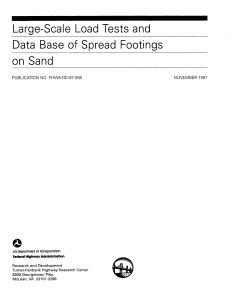Disaster prevention begins with good human settlement
Anuncio
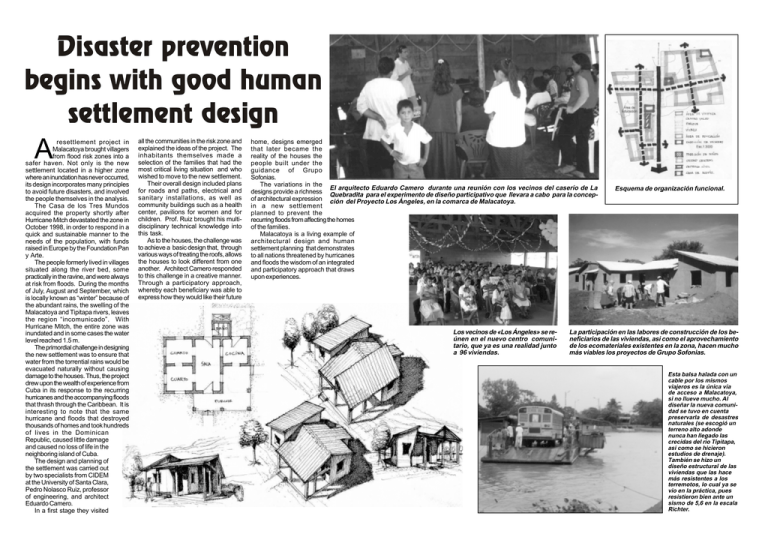
Disaster prevention begins with good human settlement design A resettlement project in Malacatoya brought villagers from flood risk zones into a safer haven. Not only is the new settlement located in a higher zone where an inundation has never occurred, its design incorporates many principles to avoid future disasters, and involved the people themselves in the analysis. The Casa de los Tres Mundos acquired the property shortly after Hurricane Mitch devastated the zone in October 1998, in order to respond in a quick and sustainable manner to the needs of the population, with funds raised in Europe by the Foundation Pan y Arte. The people formerly lived in villages situated along the river bed, some practically in the ravine, and were always at risk from floods. During the months of July, August and September, which is locally known as “winter” because of the abundant rains, the swelling of the Malacatoya and Tipitapa rivers, leaves the region “incomunicado”. With Hurricane Mitch, the entire zone was inundated and in some cases the water level reached 1.5 m. The primordial challenge in designing the new settlement was to ensure that water from the torrential rains would be evacuated naturally without causing damage to the houses. Thus, the project drew upon the wealth of experience from Cuba in its response to the recurring hurricanes and the accompanying floods that thrash through the Caribbean. It is interesting to note that the same hurricane and floods that destroyed thousands of homes and took hundreds of lives in the Dominican Republic, caused little damage and caused no loss of life in the neighboring island of Cuba. The design and planning of the settlement was carried out by two specialists from CIDEM at the University of Santa Clara, Pedro Nolasco Ruiz, professor of engineering, and architect Eduardo Camero. In a first stage they visited all the communities in the risk zone and explained the ideas of the project. The inhabitants themselves made a selection of the families that had the most critical living situation and who wished to move to the new settlement. Their overall design included plans for roads and paths, electrical and sanitary installations, as well as community buildings such as a health center, pavilions for women and for children. Prof. Ruiz brought his multidisciplinary technical knowledge into this task. As to the houses, the challenge was to achieve a basic design that, through various ways of treating the roofs, allows the houses to look different from one another. Architect Camero responded to this challenge in a creative manner. Through a participatory approach, whereby each beneficiary was able to express how they would like their future home, designs emerged that later became the reality of the houses the people built under the guidance of Grupo Sofonias. The variations in the El arquitecto Eduardo Camero durante una reunión con los vecinos del caserío de La designs provide a richness Quebradita para el experimento de diseño participativo que llevara a cabo para la concepof architectural expression ción del Proyecto Los Ángeles, en la comarca de Malacatoya. in a new settlement planned to prevent the recurring floods from affecting the homes of the families. Malacatoya is a living example of architectural design and human settlement planning that demonstrates to all nations threatened by hurricanes and floods the wisdom of an integrated and participatory approach that draws upon experiences. Los vecinos de «Los Ángeles» se reúnen en el nuevo centro comunitario, que ya es una realidad junto a 96 viviendas. Esquema de organización funcional. La participación en las labores de construcción de los beneficiarios de las viviendas, así como el aprovechamiento de los ecomateriales existentes en la zona, hacen mucho más viables los proyectos de Grupo Sofonias. Esta balsa halada con un cable por los mismos viajeros es la única vía de acceso a Malacatoya, si no llueve mucho. Al diseñar la nueva comunidad se tuvo en cuenta preservarla de desastres naturales (se escogió un terreno alto adonde nunca han llegado las crecidas del río Tipitapa, así como se hicieron estudios de drenaje). También se hizo un diseño estructural de las viviendas que las hace más resistentes a los terremotos, lo cual ya se vio en la práctica, pues resistieron bien ante un sismo de 5,6 en la escala Richter.
